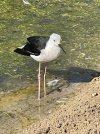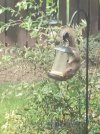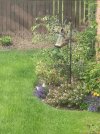Peter Insole
Western Thunderer
Hi Ian, I'm afraid the larvae in your image appears to be of a non native pest. The Harlequin Ladybird is causing some alarm, as it's incredibly rapid spread across the UK is having a serious impact on our own species.
I understand that anyone coming across one is being encouraged to report the sighting!
This year is turning out to be greenfly bonanza time, while their natural predators are clearly struggling.
Pete.
I understand that anyone coming across one is being encouraged to report the sighting!
This year is turning out to be greenfly bonanza time, while their natural predators are clearly struggling.
Pete.















